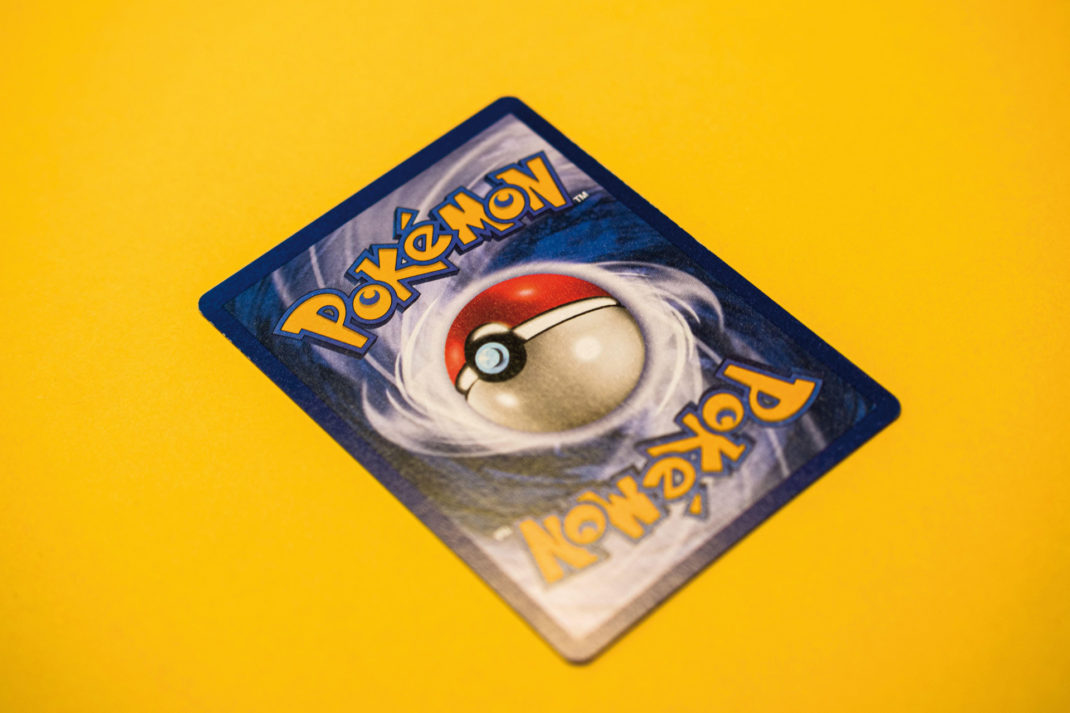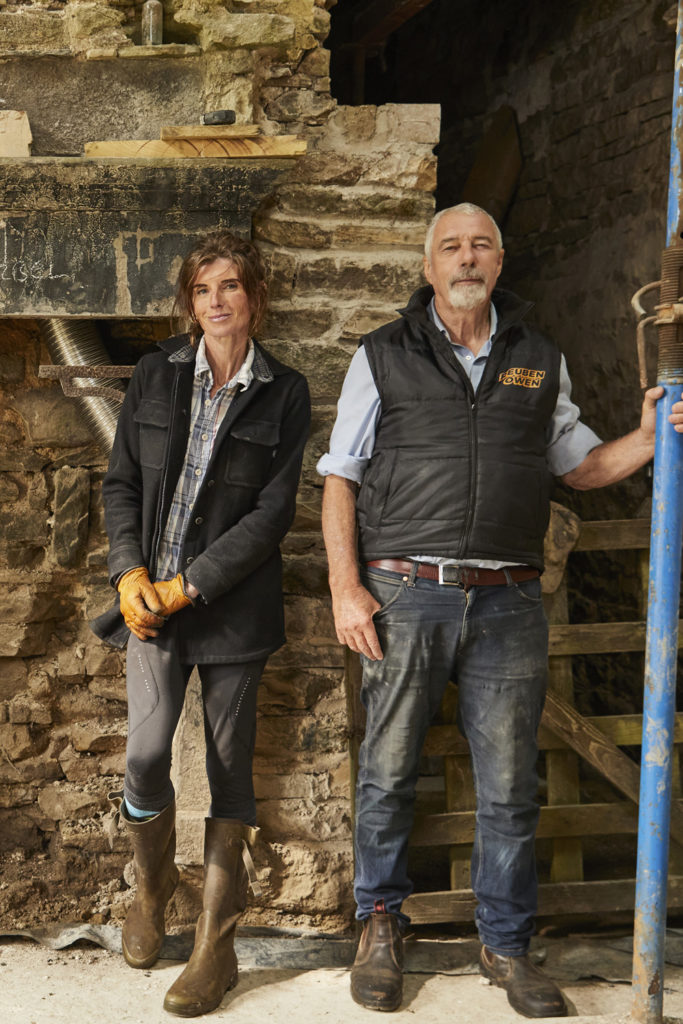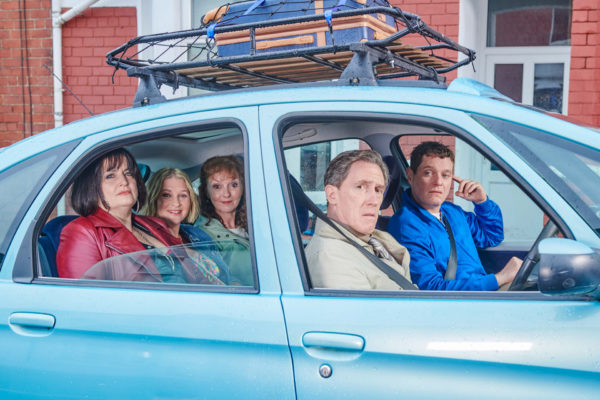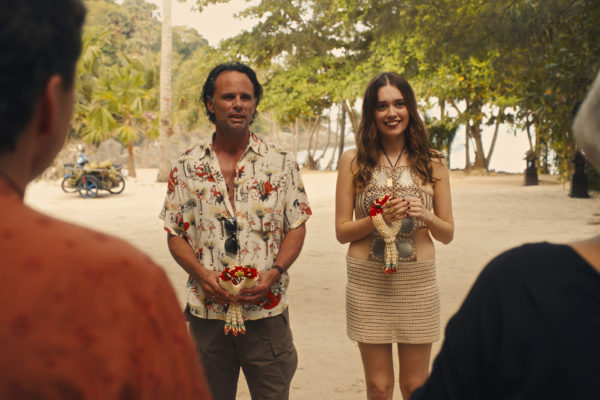Is Netflix’s La Palma Based On A True Story?
By
4 months ago
A new disaster series just dropped
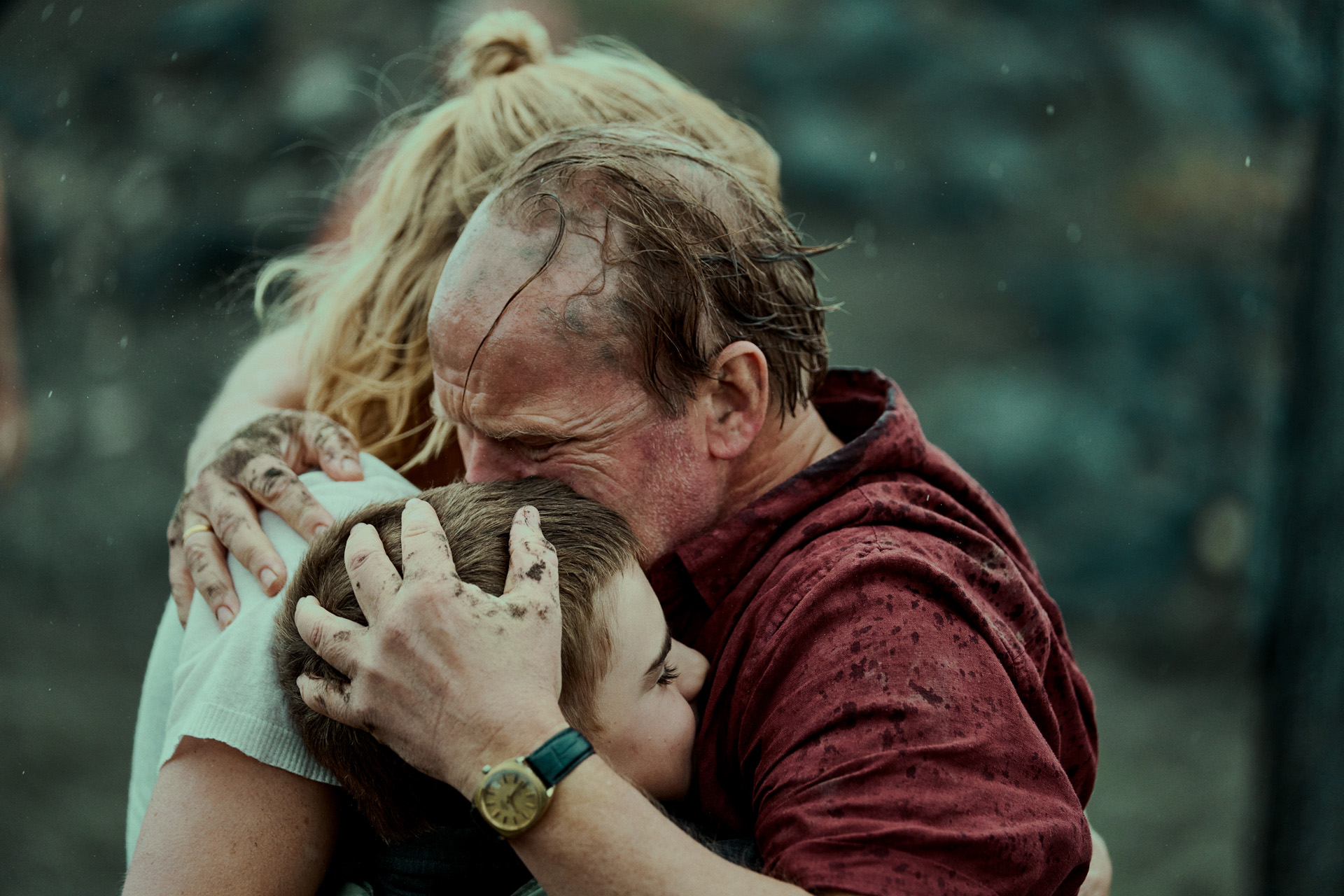
We’re living in an era of eco-anxiety – but volcanic eruptions have always disrupted our lives. That said, as populations swell, buildings get ever-more expensive and people become more and more accustomed to upping sticks and jetting off across the globe in pursuit of warm weather and new adventures, the havoc a volcanic eruption could wreak has never been higher. This is the subject of La Palma, a brand new Netflix drama centring on a Norwegian family holidaying in the Canary Islands. Here’s what you need to know before you tune in.
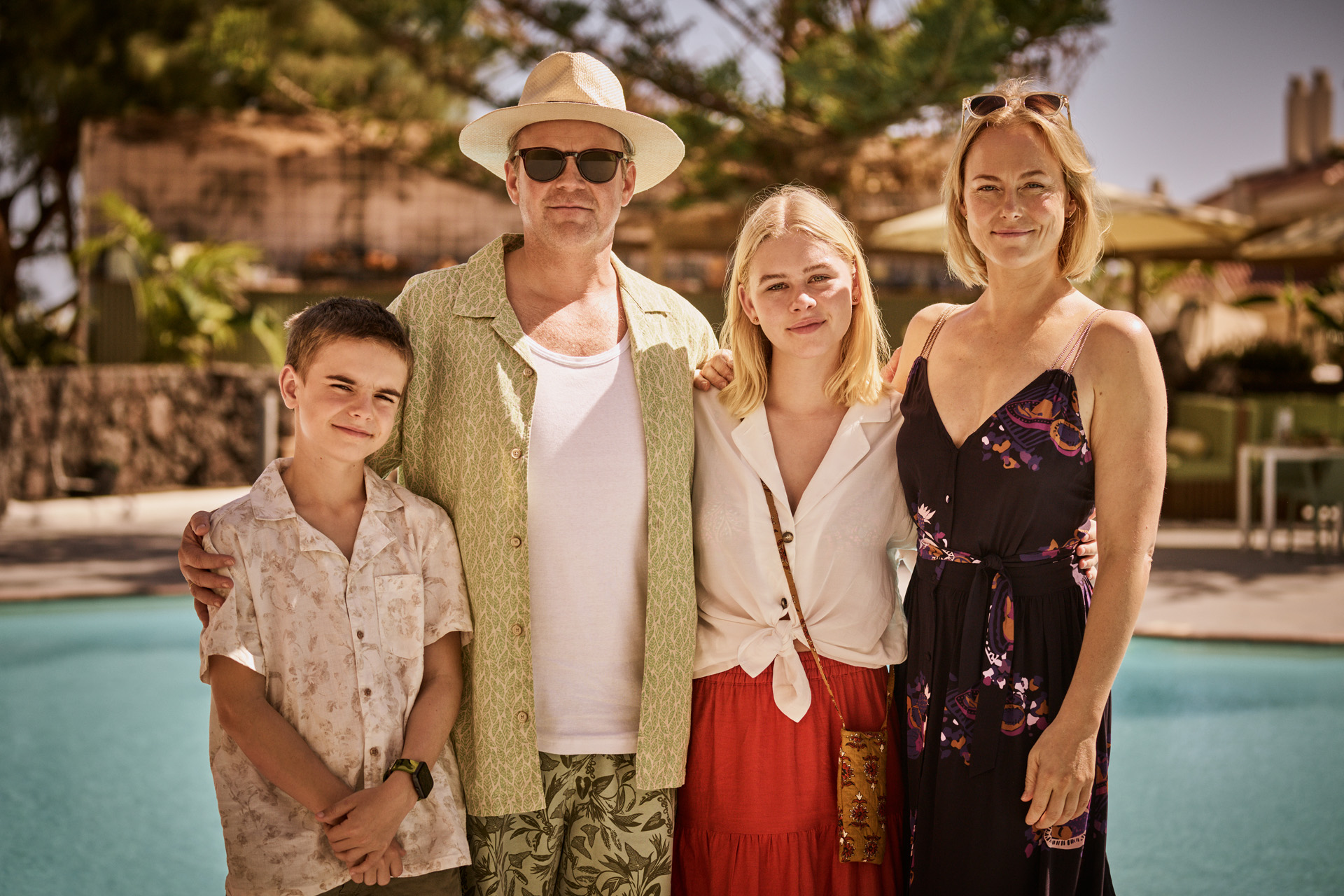
Bernard Storm Lager, Anders Baasmo, Alma Günther & Ingrid Bolsø Berdal in La Palma. (Courtesy of Netflix © 2023)
What Is La Palma About?
Created by Martin Sundland, Lars Gudmestad, and Harald Rosenløw Eeg, La Palma is set on the Spanish Canary Island of the same name – the archipelago’s most northwesterly island, sitting in the Atlantic Ocean off the west coast of Morocco. A popular holiday destination, Norwegian parents Fredrik and Jennifer decide to travel here with their children Sara and Tobias for their annual Christmas vacation. Little do they know, while they’re enjoying the sand and sea, geological researchers Marie and Haukur have discovered a devastating volcanic eruption is about to take place, set to cause devastation not just on the island, but across continents. The eruption is preceded by a series of earthquakes – and Marie and Haukur are in a race against time to convince their boss, Álvaro, to take action.
Is La Palma Based On A True Story?
No, La Palma is not based on a true story, but the island and its volcano, Cumbre Vieja, are both real. Cumbre Vieja is the most active volcano in the Canary Islands, a chain of large and small islands all formed volcanically by the Canary Hotspot. In simple terms, the Canary Hotspot is a weak spot in the African tectonic plate the islands sit on, which allows magma to breach the surface of the planet and form a volcano.
Cumbre Vieja is one of the Canary Islands’ few active volcanoes, last erupting from September to December 2021. Eruptions have also been recorded in 1971, 1949, 1712, 1677 and even earlier. Luckily for locals, Cumbre Vieja’s eruptions aren’t especially explosive – it’s the associated earthquakes that are more unsettling. In 2021, a whopping 25,000 earthquakes were recorded in the 10 days around Cumbre Vieja’s eruption on 11 September (seven days before and three days after), rating up to five on the Richter scale (meaning the earthquakes were moderate, causing slight damage to buildings and felt by everyone). More than 7,000 people were evacuated, including many tourists like the Norwegian family in La Palma, while 1,300 homes were damaged or destroyed along with valuable banana plantations, many schools, churches and important infrastructure like roads. All in all, the economic impact was estimated around £760 million – but luckily there were no fatalities, not even a single injury. (That said, in 2023, a court ruled a 72-year-old man found dead in the exclusion zone did in fact die as a result of the eruption – after inhaling the toxic gases it was pumping into the atmosphere.)

(Courtesy of Netflix © 2023)
Could The La Palma Disaster Actually Happen?
So is there any truth to La Palma? Yes – some. The tsunami threat explored in La Palma is based on a 2001 study: that a tsunami would be triggered by part of Cumbre Vieja collapsing into the Atlantic Ocean. In La Palma, a piece of rock the size of Manhattan collapses into the ocean, producing a mega-tsunami. Huge waves radiate across the ocean as far as the eastern coast of North America, along with parts of Europe and west Africa. The original study posited waves up to 2 km tall could be created, travelling at about 720 km/hour across the ocean; this would inundate the African coast in one hour, the southern coast of Britain in three and a half hours, and the eastern seaboard of North America in about six hours (by which time waves would be 30 to 60 metres tall). In the case of the US, waves could travel up to 25 km inland, which would greatly damage cities including Boston, New York City and Miami.
The reality is scientists think this is very unlikely to happen: ‘The threat of mega tsunami generation from collapses of oceanic island stratovolcanoes has been greatly overstated,’ George Pararas-Carayannis, editor of academic journal Science of Tsunami Hazards, retorted when the theory explored in La Palma was posited. ‘No mega-tsunamis can be expected.’
The way the eruption is handled in the Netflix series is also pretty unrealistic, with Álvaro ignoring Marie and Haukur’s glaring research because he has mis-called an eruption in the past and doesn’t want to repeat the same mistake. The fact that Sara – fleeing for home after Charlie snaps at her – boards a home-bound aeroplane which is hit by the volcanic eruption, causing it to crash and burn, would never happen in reality. As soon as there was an inkling of an eruption, like the gas bubbling through the ocean, all flights would be grounded and civilians evacuated from the danger zone.
Of course, we fortunately find out Sara didn’t board that unrealistically doomed plane after all. But Marie and Haukur are injured when the mountain they are hiking spews ash ahead of the eruption; again, the duo would never be this close to danger in real life. Eventually, the government agrees to a mandatory evacuation order. Knowing they can’t escape, Haukur and Álvaro climb the mountain to see the eruption up close. Naturally, both are swallowed by lava. Again, this would never happen.

(Courtesy of Netflix © 2023)
The Final Message Explained
La Palma ends on somewhat of a sentimental note – but it’s slightly cryptic. Here’s what it means. After Sara reunites with her family, Fredrik comforts scientist Marie who he befriended in their hunt for safety. The screen fades to black before it flashes back to an earlier scene when Marie’s brother Erik was swimming with turtles before the eruption. Sensing the dangerous gases in the ocean, the turtles flee – another omen of the incoming disaster. Later in La Palma, Erik is fatally shot in a tussle over his diving boat, which Frederik and Marie then use to get to safety in Tenerife. Now deceased, we hear Erik’s voice over the scene of the turtles, telling Marie they are older than dinosaurs. ‘They know they have to do something when it’s no longer safe,’ he says. ‘So if we’re gonna survive as long as they have, we have to start listening.’
‘To what?’ Marie says. ‘To nature,’ Erik responds.
While volcanoes and earthquakes are crucially not caused by climate change, it seems La Palma’s creators are sharing an eco-conscious message here. As natural disasters like drought, floods and tropical storms increase with the climate crisis, we need to reconnect with our planet and listen to what it needs.
Where Was La Palma Filmed?
La Palma was filmed on the real island of La Palma – also known as the ‘Isla Bonita’ or ‘beautiful island’. Beloved for its natural scenery, hiking trails and sandy beaches, La Palma has suffered a fall in tourists since its real 2021 volcanic eruption – so hopefully Netflix’s new series will give the island some much-needed tourism love.
If you’d like to get specific, the hotels we see on screen are Isla Bonita and H10 Taburiente Playa.
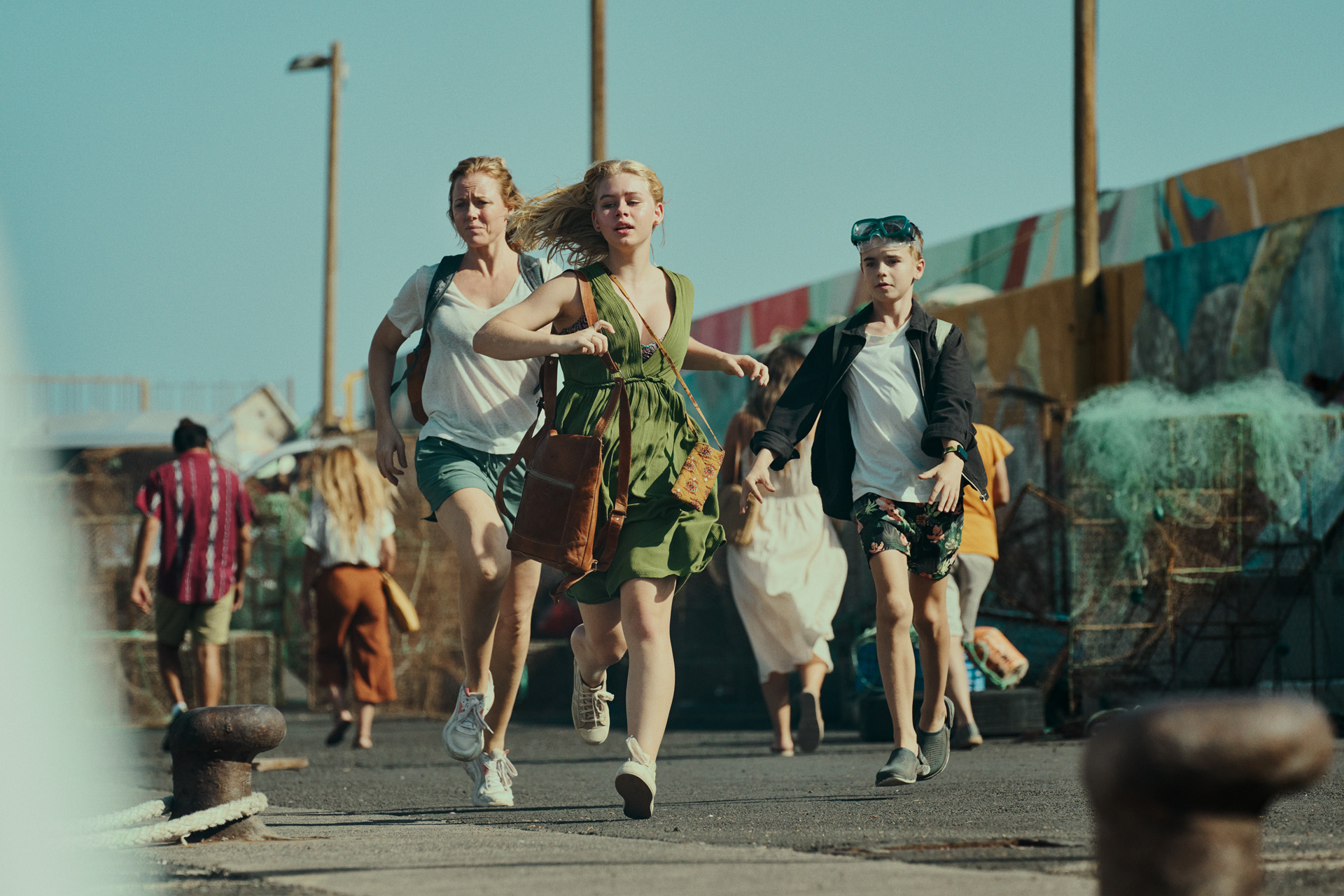
(L to R) Ingrid Bolsø Berdal as Jennifer, Alma Günther as Sara and Bernard Storm Lager as Tobias in La Palma. (Courtesy of Netflix © 2023)
The Cast
- Anders Baasmo Christiansen as Fredrik, a teacher and Jennifer’s husband
- Ingrid Bolsø Berdal as Jennifer, Fredrik’s wife
- Alma Günther as Sara, Fredrik and Jennifer’s daughter
- Bernard Storm Lager as Tobias, Fredrik and Jennifer’s son
- Thea Sofie Loch Næss as Marie, a doctoral student at the La Palma Geological Institute
- Ólafur Darri Ólafsson as Haukur, a researcher and Marie’s colleague
- Jorge de Juan as Álvaro, Haukur and Marie’s boss
- Jenny Evensen as Charlie, Sara’s love interest
- Amund Harboe as Erik, Marie’s brother
- Thorbjørn Harr as Jens, Jennifer’s brother who works in Norway’s Royal Ministry of Foreign Affairs
WATCH
All four episodes of La Palma are streaming now on Netflix.


